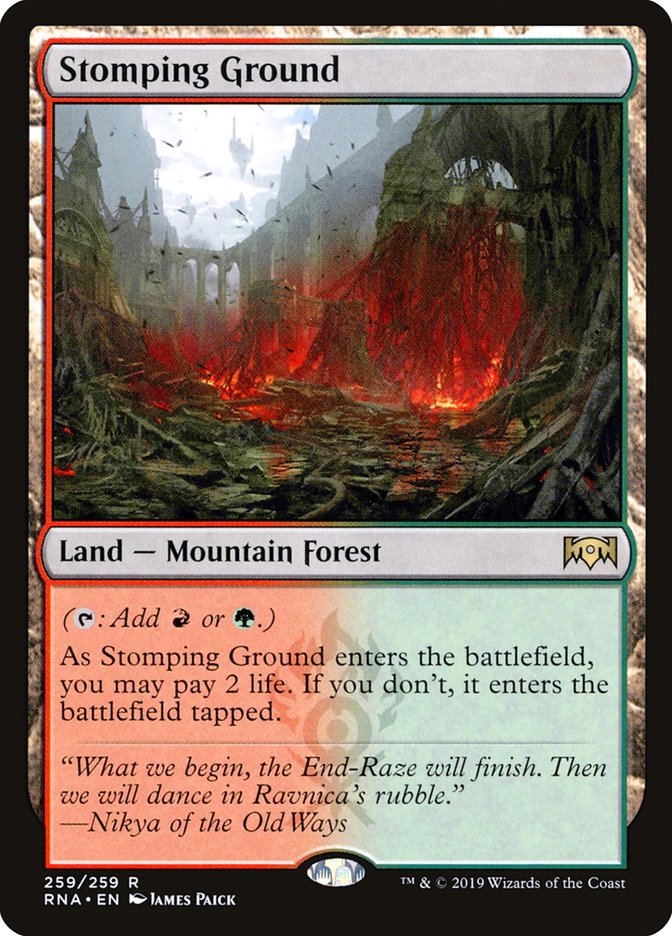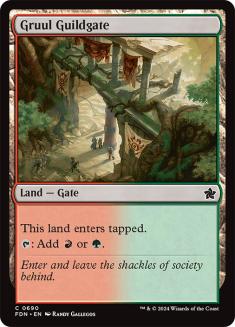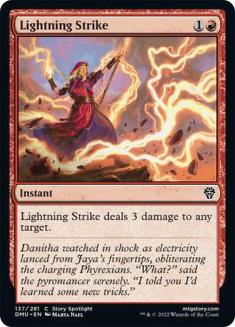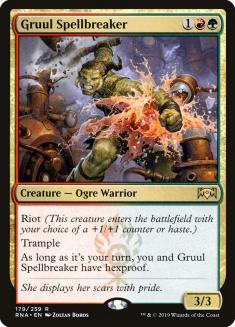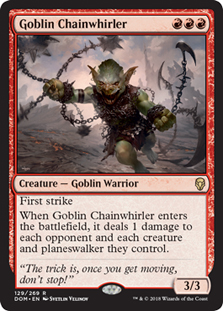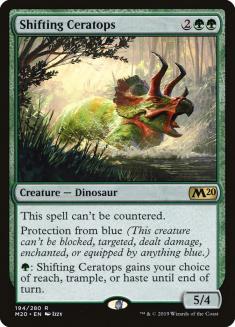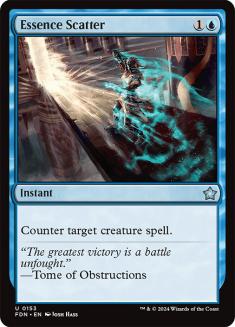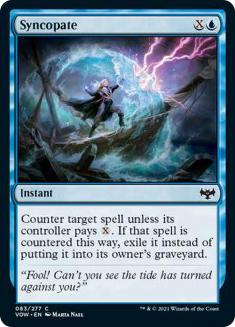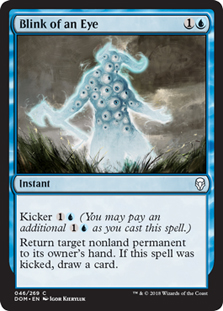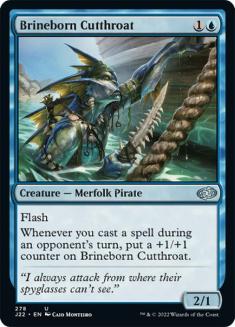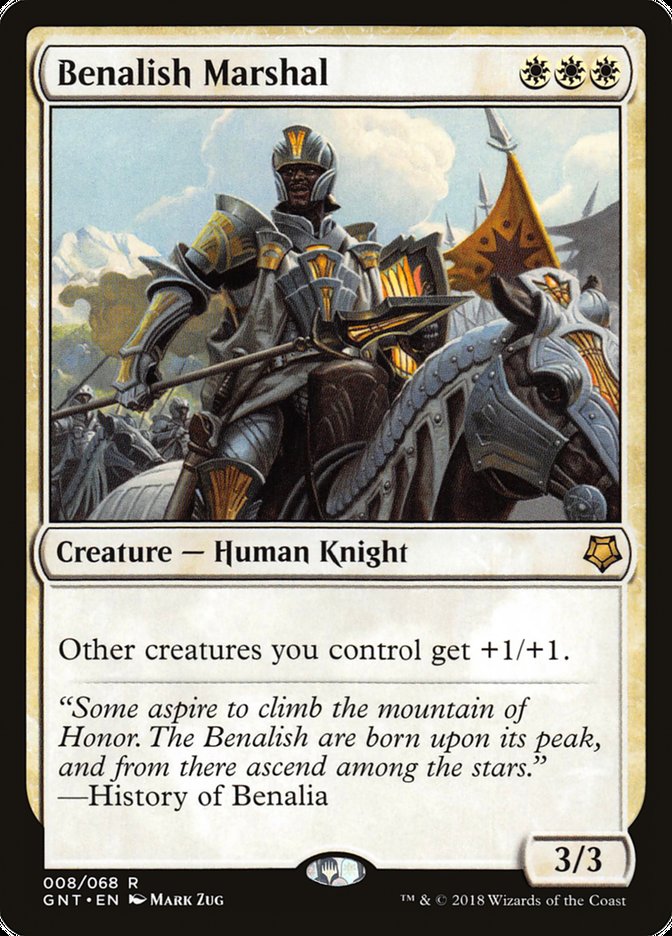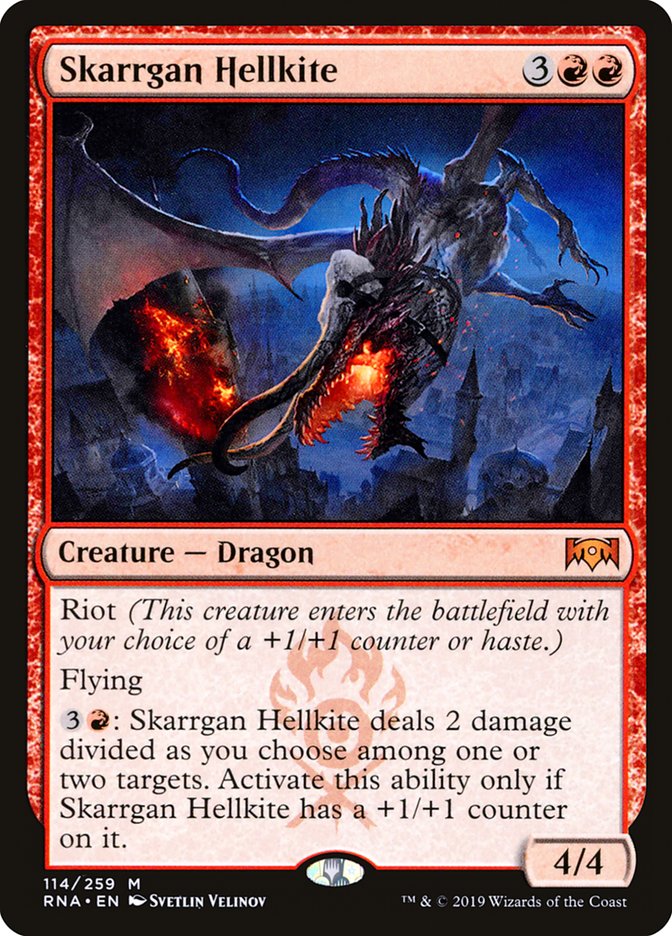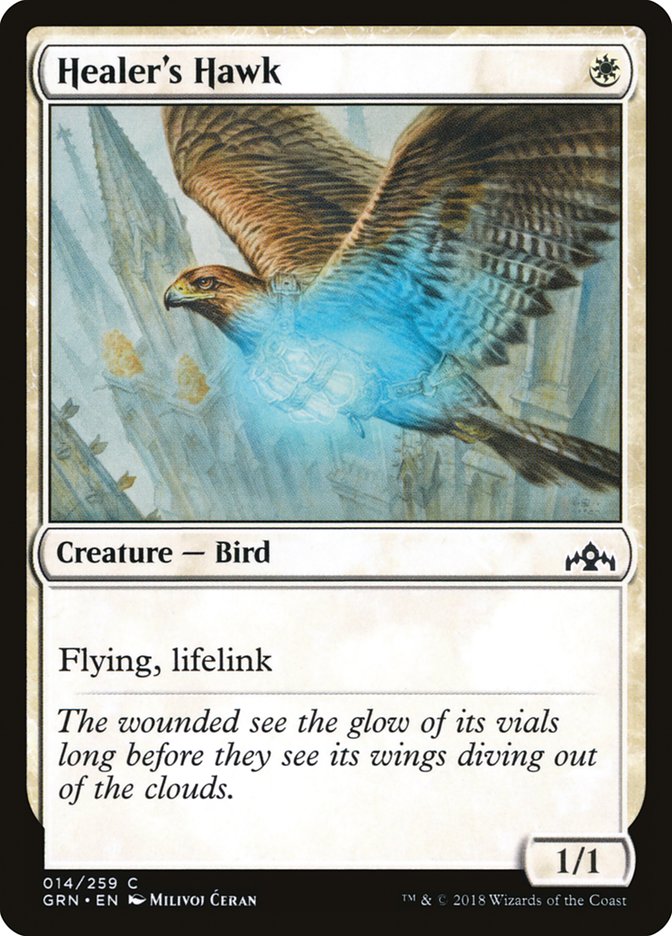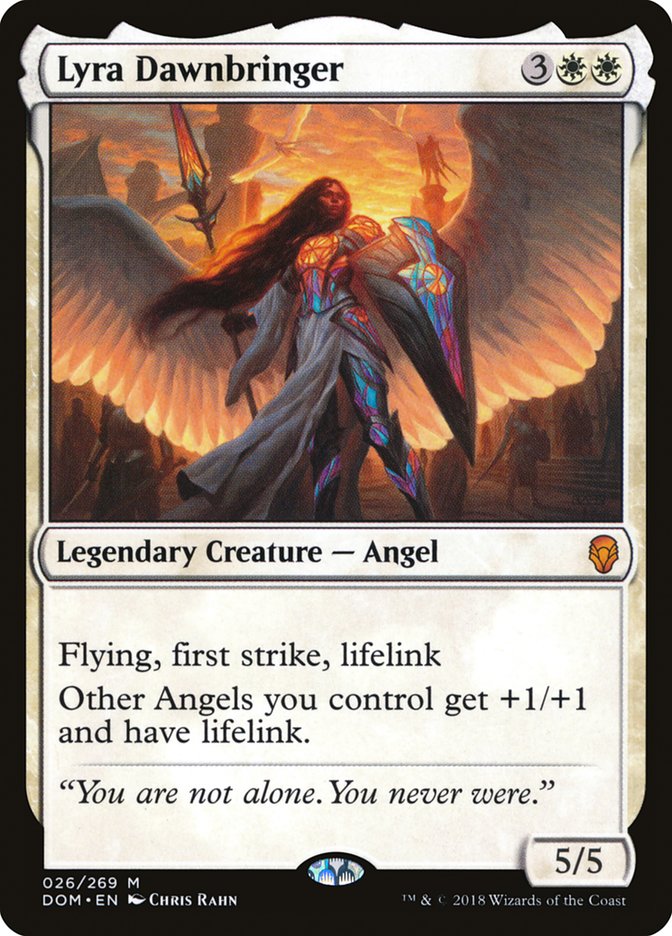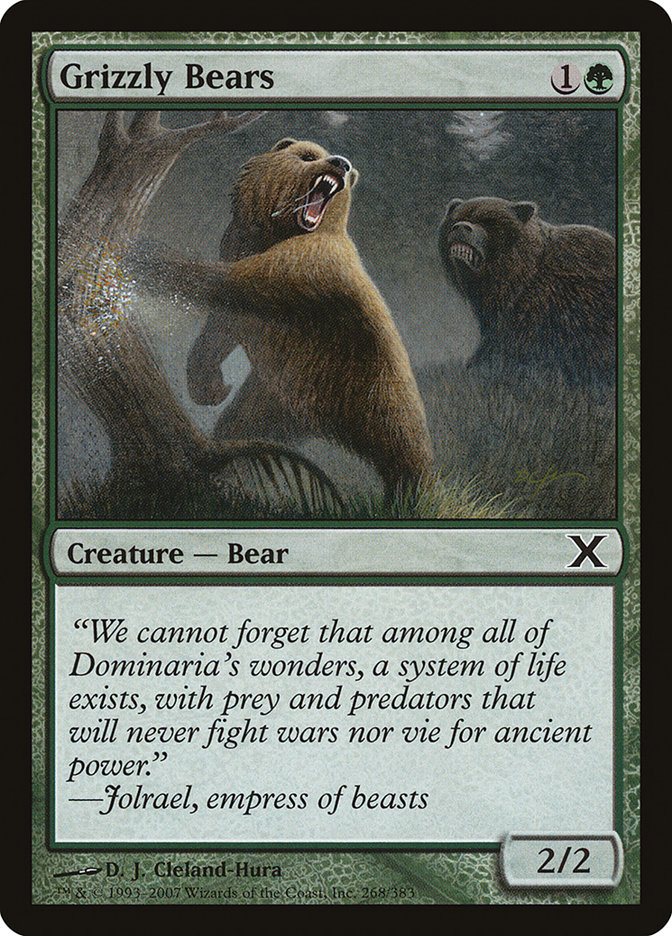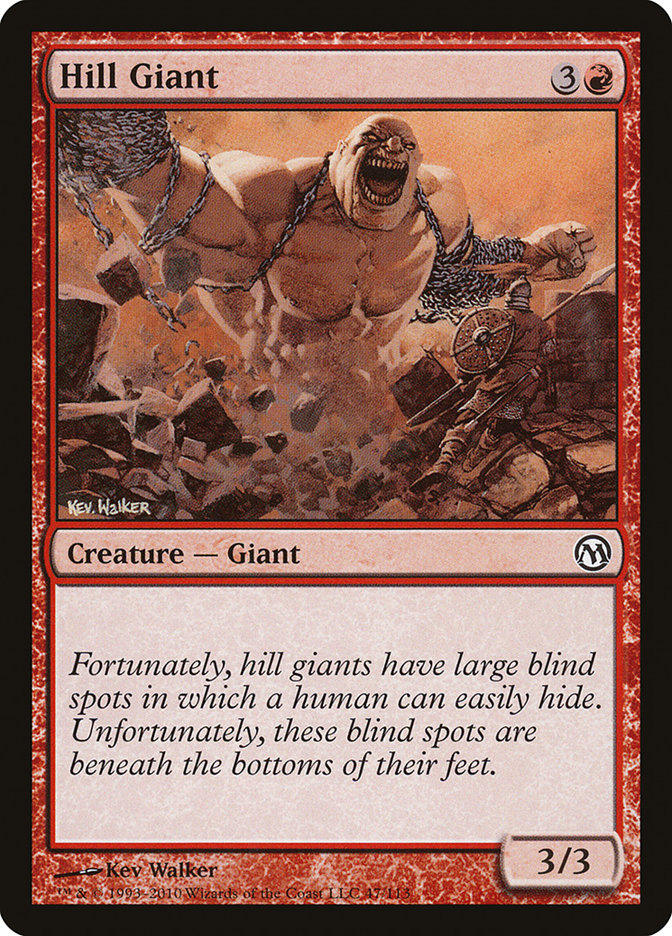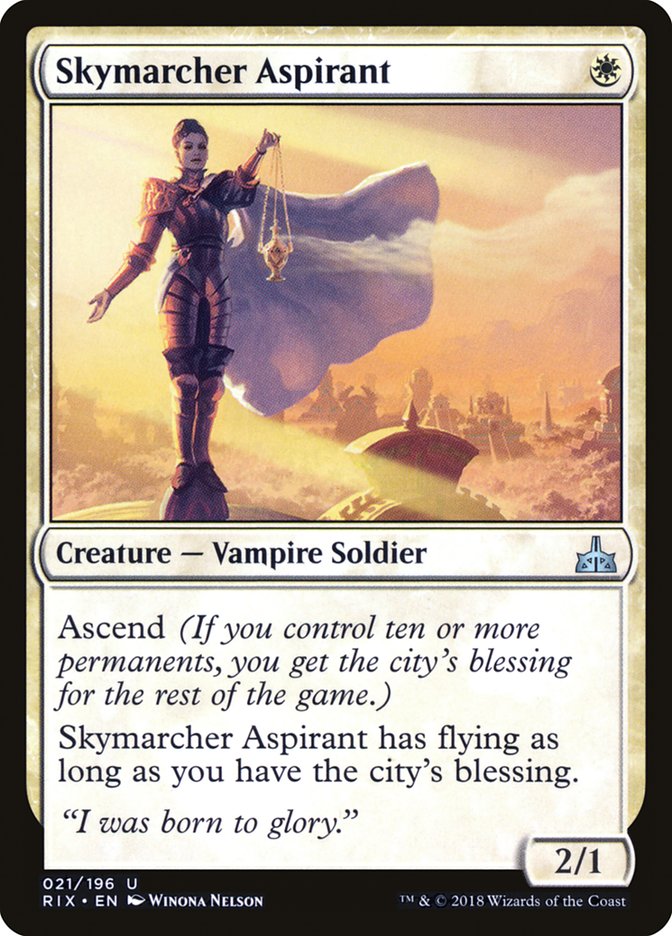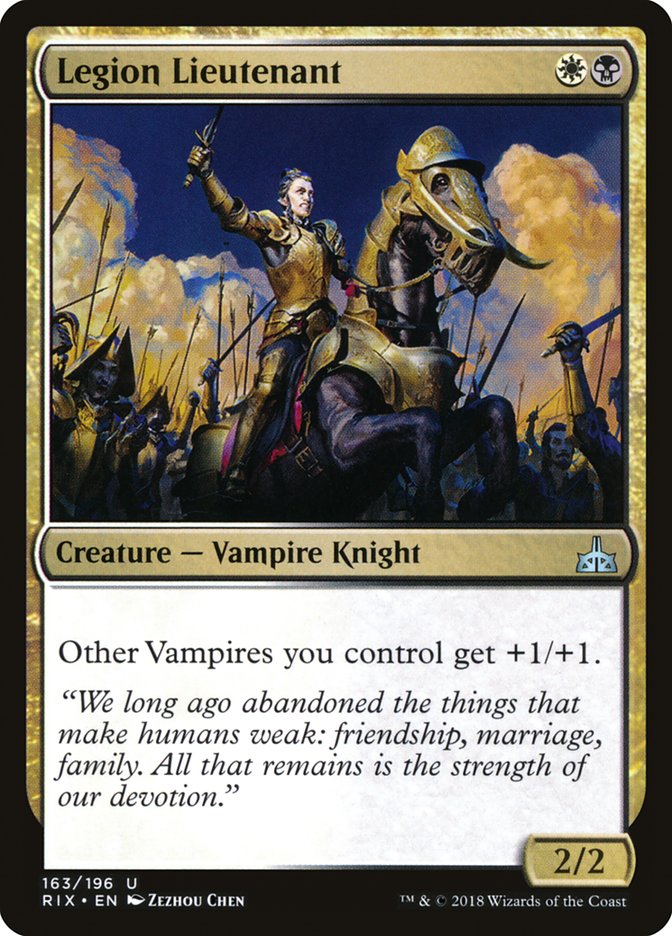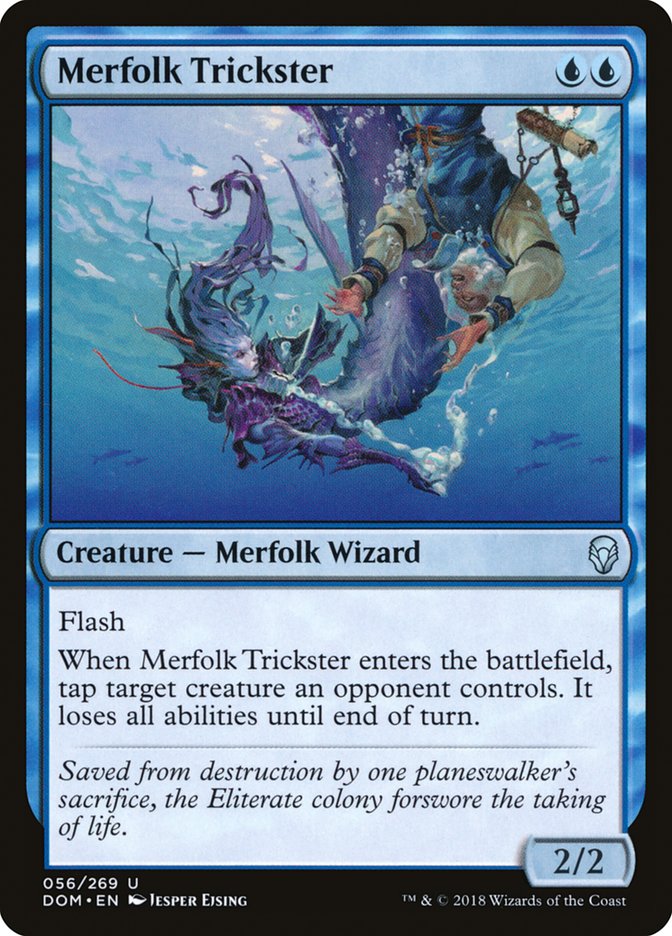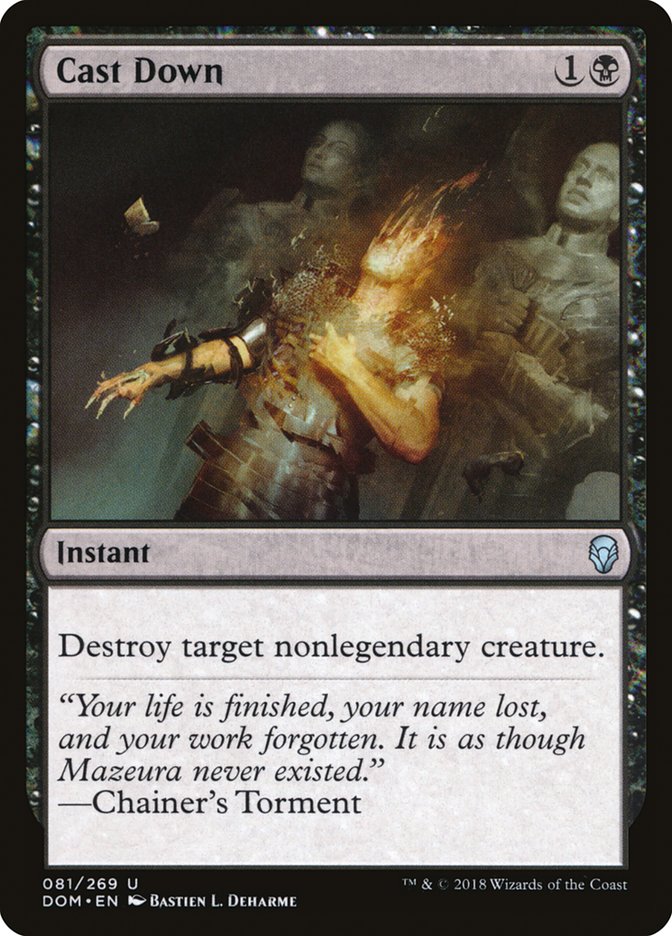How do you figure out what to think about and when? Practice can be helpful, sure, but how do you even go about thinking about Magic better? After all, people talk about tight technical play, but how do you do that?
Tight technical play decides more games of Magic than all other factors combined.
Tight technical play stems from a robust understanding of the implications of various possible decisions in Magic. There’s an element of discipline, so get in shape, get enough sleep, focus on what matters, be honest with yourself and others, eat reasonably healthy, and stay hydrated. Rock on. That discipline, however, is building on a base-level understanding of the game and the interactions in it. Having effective strategies for how to even think about the game and make decisions about which cards to play and when is invaluable and gives you much bigger of a multiplier long-term than you could ever get from some new sideboarding tech, or whatever.
Chapter 1: The Untap Step
You laugh, but really, walk through the turn sequence. Look into it, what’s really going on. It’s not about making some bottomless rabbit hole to get sucked into. It’s about understanding how it works so you can save your mental resources and focus for what matters, with some mechanism in place for helping you figure out when you should be making it your focus.
Normally, the untap step is just untapping all your cards. No problem. It doesn’t usually get changed too much, but understanding what can change it ahead of time, and having experience dealing with that, lets you only put thought here when needed. Sometimes you’ll have a card that you can choose whether to untap, and sometimes you’ll have to remember not to untap something that isn’t supposed to. No biggie, not a lot happens here. Just make sure you know what’s expected of you, so you don’t have to spend the beginning of your turn figuring it out. And do it before you draw your card for the turn; I mean, have a little respect for the game.
Upkeep and Draw
Likewise, the upkeep and draw step usually don’t have a lot going on at a baseline, and it’s mostly just a case of having a routine for the right way to untap and draw, with an understanding of when something gets inserted in between or around those two.
The Main Phase
Now we’re getting into the heart of it.
Every turn, you are generally confronted with numerous possibilities. You’ve drawn a new card for the turn and can decide which land, if any to play. Depending on what’s in your hand, there may be several options as to which cards to play, how to use them, and in what order. For each of your creatures, you must decide if they are to attack or stay untapped as potential blockers. If they stay untapped, you may be forced to decide if they are actually going to block, and if so, what?
For each of your planeswalkers, which ability will you use, and how? As if this wasn’t enough complexity, many cards give you the option to convert mana or some other resource into an effect at instant speed. Now you potentially have added options every time anything happens!
We don’t have an unlimited amount of processing power, nor unlimited time to consider things. Effective use of shortcuts, pruning down the decision trees, and generally thinking about the game efficiently are among the most valuable skills you can develop for improving your technical game.
When Google’s Deepmind team built the various AI systems that led up to AlphaGo and AlphaZero, they faced an enormous challenge. How can you build an AI that plays the game Go effectively, when the game is played largely intuitively and the possibility space of the game is so massive that it can never be remotely calculated with raw computation?
The observable universe has about 42 digits worth of atoms. There are about 120 digits worth of reasonable Chess games. There are over 600 digits worth of reasonable Go games. Remember, that’s not five times more than Chess, but actually several googol times as many possibilities.
How to Play Land
When you draw your card for the turn, you generally want to evaluate the implications of that card before acting. If it has an opportunity cost, what would be the cost of using it? If it’s a land, is it better to play than your other land? If it costs mana, what would you not be able to do if you played it? If you can’t play it this turn, when could you potentially play it? How does that impact your other options?
Generally, the first question you must consider when deciding which land to play is whether it will enter the battlefield tapped or not. This is obviously dependent on the cards in your hand, and when you have a choice to make here, it is mainly about spending your mana efficiently. When you don’t need the extra mana this turn, you generally might as well get playing the tapped land out of the way (since it saves you a mana later). If you would sacrifice something by playing the tapped land this turn, how does that compare to what would be sacrificed by playing the tapped land next turn?
Mapping Out Your Turns
Let’s suppose you’ve got Mountain and Stomping Ground against an opponent with Island and Forest.
Now, let’s consider the following hand:
Playing Mountain would let us cast our choice of three-drops, and our next turn would be efficient, as we could cast our other three-drop and the Guildgate in the same turn, using all our mana. We’ve still got the flexibility of casting Lightning Strike next turn, if we decide to do that instead, which only leads to us wasting one mana if we take that option.
If we were to play Gruul Guildgate first, however, our only option this turn is whether to Lightning Strike. There’s definitely a possibility that our opponent will cast something we’ll want to Lightning Strike, making this turn’s mana efficient, but if they don’t, we’ll have wasted two mana. Even if they do, however, our next turn isn’t efficient, either. If we don’t draw a four-drop or another tapped land, we’ll just be casting a three-drop and wasting a mana. Even if we draw either of those, we’re still just wasting a mana on the following turn.
Even beyond all this mana efficiency (which matters more than it might appear, given how frequently opponents will interact with what we’re doing), there’s also the question of damage. If we cast a Spellbreaker on Turn 3, that’s four damage on Turn 4 that we’d be missing out on if we held up Lightning Strike instead. Then, even if we cast it on Turn 4, that means we haven’t cast the Goblin Chainwhirler yet. Now we’re missing three more points of damage on Turn 5. The loss of damage can actually accumulate even further if we draw more creatures that get held up from having to play out cards from our hand we could have already gotten down.
Now let’s imagine a slightly different hand:
Now, if play the Mountain and cast the Gruul Spellbreaker, we’d still be able to cast Lightning Strike next turn, but we’d be pretty unlikely to be able to cast the Shifting Ceratops.
If we play the Gruul Guildgate, we might be able to use Lightning Strike, but our Turn 4 play will be Shifting Ceratops (planning to play Gruul Spellbreaker on Turn 5, depending on what we draw).
How do these two compare?
Casting the Gruul Spellbreaker on Turn 3 means four extra damage on Turn 4 at a baseline, though Shifting Ceratops on Turn 4 does get one damage back on Turn 5.
Each of these creatures has options as to how to cast it, however, so we should also consider what our Turn 5 play will be. For instance, if we cast Gruul Spellbreaker on Turn 5, maybe we’ll be more inclined to choose the 3/3 haste mode, which, when combined with the one extra point of power on the Ceratops, makes our damage back up (at the cost of -1/-1 on the Spellbreaker). That said, Shifting Ceratops also has options, and if we draw a Forest, we could potentially cast it on Turn 5 and give it haste, pulling back ahead on the damage.
Considering Your Opponent in Sequencing
We’re not just goldfishing, though. When considering between the two possible lines of play, we ought to take into consideration what our opponent may do. In this case, they have played just a Forest and an Island. This suggests they might have stuff like:
In the case where they have an Essence Scatter or a Syncopate, casting Gruul Spellbreaker right now doesn’t get us very far. We trade our three-mana play for two mana they might have wasted, and then our next turn isn’t great.
If we instead play the Guildgate, we make them waste their two mana unless they have a Cutthroat, and if they do, we can just Lightning Strike it. Then we’ll be able to cast Shifting Ceratops on our following turn, again wasting their mana and leaving their permission stranded. They’ll have to do something about the Ceratops or it’ll quickly take big chunks out of their life. Even if they cast a Nightpack Ambusher to block on their fourth turn, that’ll give us an opening to play Gruul Spellbreaker when they’re tapped out.
If our opponent had just played two Mountains, however, we’d be a lot more inclined to cast the 4/4, since anything they could have for two wouldn’t be able to one-for-one kill it. If we draw a land, our next turn will be a big one, and even if we don’t, we’ll still have the Lightning Strike with the Ceratops coming down on the following.
When to Play Land First
When you’ve decided which land to play, there’s still the question of when to play it. Everything else being equal, you generally want to wait to play land until the first moment you might want to use it or represent the possibility of using it. Most players play their land first too often, “getting it out of the way,” or perhaps imagining that it means a larger range of things they could be bluffing.
Really, however, waiting to play your land withholds a piece of information that is more important, more often: “Do you have another land or not?” You have to be careful, though, as playing your land too early is generally only a tiny mistake, whereas playing your land too late is frequently catastrophic. For instance, even if you thought you weren’t going to spend the mana anyway, overlooking the possibility of an opposing Syncopate can be very costly.
That’s kind of where some of the skill is, though. Most players “hedge” by playing their land too early, because when they get fancy and wait, it only takes one mistake in twenty to be devastating. On this note, while you do want to always strive to improve, you only have so much time and processing power. Focusing on the things that matter is the important thing, so if you want to err on the side of playing your land early, hedging against Syncopate, playing two instants in combat, or even just forgetting, that’s no sin, particularly while you’re getting familiar with a format and you might not already know all of the possible ways it could matter.
When to Attack First
That said, if you’re going to play a tapped land, waiting until after you’ve played your creature or made your attack or whatever is usually right. After all, what advantage does doing it early give you? Unless you’ve got some landfall card or something, you’re usually getting nothing out of it. You are, however, signaling information to your opponent.
First of all, that’s one less card they don’t know, and they know that you will for sure have an extra mana next turn. It also gives them some amount of information about the possible distribution of costs in your hand. For instance, if you play a Guildgate on Turn 3 and then attack, they know you can’t follow up with a three-drop after combat. This might make it safe to tap out for a removal spell, since they don’t have to fear you playing a Teferi, Time Raveler in your second main phase or some other such threat.
Similarly, everything else being equal, we generally want to play permanents that aren’t going to do anything this turn after combat. Why let our opponent know what creature we’ll have back on defense, or what possible other target for their removal spell they could kill?
Of course, that heuristic is only a starting place. How do we know when to deviate from it?
When to Play Creatures First
We can shortcut the question to: “How would playing this card before I attack benefit me?” If we can come up with any benefit, then we have something to compare. For instance, if the creature has an ability that immediately affects the battlefield, maybe a static ability, an enters-the-battlefield ability, or haste, well, those are all potentially beneficial.
This doesn’t mean you should definitely play them first. It just means you should consider the possibility. That’s what having the shortcut is really about. It’s about having that flag in your mind, knowing that when you are going to play a creature that can have an immediate impact, that’s a spot to consider playing it before you attack.
It’s not always fundamental to the card, however. You can’t just memorize a list of which cards “have an impact.” You also want to develop a system for being able to tell what things your opponent could do that would cause you casting a creature to have an impact. For instance, let’s say you know your opponent with four mana has a Nightpack Ambusher and an Essence Scatter, and you’ve got a Healer’s Hawk and a Benalish Marshal, with a Lyra Dawnbringer in hand.
If you attack with both, the Marshal will get eaten by the Ambusher, but you’ll get to cast the Lyra Dawnbringer. If you just attack with the Hawk, you’ll get two damage in and gain two life, but if you cast the Lyra Dawnbringer, it may get Essence Scattered. If you don’t cast the Dawnbringer, they’ll still get to advance their battlefield by casting the Ambusher.
Now, maybe you just value the Dawnbringer so highly that you would throw away your Marshal, but that’s pretty risky. One option to consider is the possibility of casting Lyra Dawnbringer before attacking. Now, if they Essence Scatter the Dawnbringer, you can attack with the Benalish Marshal and get an extra three damage in.
What to Attack With
Which creatures to attack with is one of the fundamental questions in Magic. One early heuristic that some players arrive at is attacking with all their creatures when they have more than the opponent. This frequently gets some damage in, but Magic’s defender-driven combat can make this a dubious proposition. The defending player can line up everything in their favor, get some good double blocks in, and maybe even eat some creatures for free.
From there, most players move on to only attacking with creatures that can do so safely. For the majority of Magic players on Earth, this is as deep as their line goes, with the caveat that when they have enough damage on the table that will get through, or they get sufficiently desperate (or bored), they might be willing to attack with everything.
The real answer is that it’s a question of what you’re trying to accomplish. Magic is a game of options, where you and your opponent keep making choices that impact the quality or quantity of your and their options, until one of you no longer has the option to play the game.
When evaluating whether to attack, you can view each possible attack you could make as your options (along with any other play you have available to you). Then, depending on your attack, each possible block they could make, along with each possible play, well, those are their options. The opportunity cost and potential consequences of each possibility is the thing to compare.
If you have two 2/2s and they have a 3/3, you could attack with one 2/2, the other 2/2, both, or neither.
Should you attack?
Well, there are some pretty important other factors to consider. After all, attacking will generally mean they’ll block with the 3/3 and kill one of your 2/2s, but take two damage. Is that a good deal for you? After all, it could be easy for them, since they are actually choosing between taking four damage and killing nothing or taking two damage and killing one of your creatures, yet be very hard for you to decide whether to put them into that position.
What’s worth more, a 2/2 or two damage?
Well, more often than not, a 2/2 is worth more than two damage, but that’s not the real question. How to go about figuring out which is worth more in this specific instance is the interesting part.
What if they are on two life?
Okay, that might be easy, but what about if they are on three life? What about twenty?
Starting from a place of imagining all your creatures that can attack, doing so can give you a starting spot to build on. When you imagine what they would do if you were to put them in that situation, based on the best information you have, you can figure out what blocks would make the most sense, which creatures would likely die, and how much damage they would take.
What do you have to compare that option to?
Obviously, not attacking is usually an option, but when we consider how they would block if we attacked with everything, we’ll usually notice some blocks being straight-up good for them. Like, why attack with your 1/1 with a great ability, if they’re just going to block and eat it? Whichever of your creatures they are blocking and killing should at least be considered as possibilities to keep home. If you did, how would that change things? What would those potential blockers do now?
When you’ve got two (or more) possible choices for attackers and have predicted how the opponent will block, you can compare the consequences of the two paths. For instance, let’s imagine you have a Skymarcher Aspirant and a Legion Lieutenant against an opponent with a Merfolk Trickster.
Obviously if they’re at three and you attack with both, they’re blocking the Skymarcher Aspirant; however, let’s say they are at fifteen. If you attack with both, maybe you reckon they’ll block the Legion Lieutenant, since it’s having a bigger impact on the game. Under such a circumstance, you’ll have gotten three damage in and killed their Merfolk Trickster, at a cost of your Legion Lieutenant (and the buff it was giving out), as well as now having a tapped Skymarcher Aspirant instead of one capable of blocking.
If you were to attack with just the Skymarcher (considering removing the creature that was logical for them to block), now you have to consider both very real possibilities. Maybe they will block with the Trickster, “downgrading” their Trickster to prevent the three damage. Or maybe they’ll keep the Trickster around to keep the Legion Lieutenant back (or possibly mount a counterattack next turn).
While this scenario is pretty easy, with most situations making it an easy trade for them to make, the question gets a lot harder when the creature being held back actually deals more damage than the current attacker.
Let’s say we know they’ll trade. Now, we’re effectively choosing between the option of having a Legion Lieutenant or a Skymarcher Aspirant and three extra damage. You’ve still got to decide which you’d rather have, but at least you’ve distilled down what it is you’re really doing, what it is you’re really choosing between.
Blocking
Blocking is the same sort of thing. Your opponent has presented you with options, and now you’ve got to choose between them (as well as from among any options you secretly brought to the table). You have a major advantage in getting to decide between the options; but the downside is that you generally don’t have a “do-nothing option,” since not blocking is very much not the same thing as doing nothing. Taking damage is still doing something. It just hurts.
For starters, add up all the attacking damage and consider if that’s lethal. If you know you have to block and how much, you can start from there. If you know you don’t, you can start from there.
Even if you’re deciding between two bad options (take six damage or throw away a 2/2, for instance), you want to consider the consequences of your potential options and determine which one is more likely to lead to you winning the game. One of the oldest and most common blunders players make is throwing away creatures to prevent damage too early or too often. They are usually reacting to the fear of taking all that damage and wanting to do something about it; however, if they actually looked at the consequences of the two possibilities and compared them, they might view the situation differently.
For instance, let’s say you’re at sixteen and your opponent is attacking you with a 6/6. Should you chump block with your 2/2 to prevent the damage?
On the surface, you might conclude that you’re just weighing the value of a 2/2 versus six life, and yeah, I mean you kind of are, but that question is a contextual one. What does next turn look like in either scenario? What about the turn after that? Which path is more likely to lead to you actually stabilizing or winning the race?
If you chump block, will the situation be better or worse for you next turn? Most of the time, the answer is worse, as you’ll have one less creature that you would have had, but sometimes it’s actually better. For instance, if you’ll be able to deal with the 6/6 anyway, maybe you don’t care as much about the 2/2 as you would about the extra life buffer against future burn spells.
When to Cast Your Instants
Instants are particularly interesting and among the parts that make Magic great compared to some card games. They can be quite challenging to maximize, however. After all, how can you know when to cast them as soon as you can, when to cast them as late as you can, and when to cast them somewhere in the middle?
Once again, it comes down to evaluating the possibilities in terms of what costs and consequences go along with them, so that you have stuff to compare, to decide between.
For instance, let’s say you’ve got a Cast Down and your opponent is attacking you with their Thrashing Brontodon. Do you cast it now and prevent three damage, or do you hold it and see what they cast for their fourth turn? If you suspect they might have a Shifting Ceratops or a Ripjaw Raptor, you might consider it worth it to take the three damage to “downgrade” their four-drop into a Thrashing Brontodon. However, if you have a couple of Vraska’s Contempts in your hand, you might just want to get the Brontodon off the table, figuring you’ll be able to get whatever comes next off the table on the next turn.
Still another possibility is that whatever they’ll cast next will actually be less attractive of a target, or perhaps not even be legal to kill with your removal spell. Developing effective evaluation of these choices takes practice and experience; however, knowing how to distill the choices down to possible outcomes so that you can more clearly decide between greatly increases the speed and quality of learning you are able to do here.
When to Attack Planeswalkers
While it’s generally right to attack planeswalkers more often than not, there is still the question of whether this is one of those times or not. Besides, how many creatures should you send at the ‘walker? And what if they have two?
For starters, attacking planeswalkers is right more often than not for the same reason it’s usually right not to chump block. At a baseline, an additional creature or an additional planeswalker gives its owner options, whereas the implied options of life points are usually harder to convert into advantages at as good of a rate.
Even if you can’t kill a planeswalker with the attack, you can still evaluate what the change in loyalty would mean. Perhaps you’re keeping it from having the option of using its second ability? Or maybe that’s just two less damage you’ll need to do next turn. Either way, you can evaluate what benefit you’re gaining or what you are taking away from your opponent.
How Much to Attack With?
This is one of the areas of Magic that is actually most like Poker. Whenever you attack, you are making a bet. Some bets are easy, but planeswalkers build in a depth that leads to some really interesting decisions.
For instance, let’s say you have three 2/2s and they have a planeswalker with four loyalty. If you attack it with two and them with one, you stand to “win” two damage (compared to the option of attacking the ‘walker with all three), if your bet was right that they have nothing.
If they have anything, however, like a Shock, they can kill one of the 2/2s that attacked the ‘walker and keep it around for another turn. Presumably, this is worth more to them than the two damage, or else they would have just killed the attacker going at them.
You won’t always know if they have something or not, but you can evaluate what they could have, what would make sense with how the last few turns have played out. At the end of the day, however, you’re going to find yourself in spots where you don’t know if they have something and you would choose differently depending on whether they do.
In such a predicament, you want to again look at the potential consequences so you can compare them.
|
They Have Nothing |
They Have Something |
|
|
Attack ‘Walker with Three Creatures |
-2 damage |
They can potentially wait on their removal spell if they want. |
|
Split Attack |
+2 damage |
They get to keep their planeswalker, but still take +2 damage. |
Now you can ask yourself, how much does that two damage seem like it will matter compared to whether that planeswalker is off the table? If getting the planeswalker off the table is much more important to you than the two damage, you might need to be really sure they have nothing before splitting your attack and gambling to win a couple of extra points of damage.
How to attack multiple planeswalkers is the same sort of a question. What are the implications of each possible attack you’re considering? Generally, you want to keep ‘walkers off ultimates, and beyond that, you generally want to kill one ‘walker rather than injure two.
Those are really crude heuristics, though. What you actually want to do is visualize what you believe they will do in response to each of the possibilities you might present. Then ask yourself what next turn looks like, and on which path the game seems to be going in a better direction for you.
Most of the time, you’re going to be able to distill things down into four primary types of outcomes, like above. You could do one thing, or you could do another. They could have something or they might not. When things are really complicated, it’s okay to just look at parts of it, as best you can. Try to simplify the situation and focus on the parts that matter. What are you trying to accomplish? What are the possible outcomes of the options you are considering? How likely do you think it is that they have something or another?
Magic’s an enormously deep game. Part of getting better is letting go of the idea of already being “good enough.” Sometimes, you gotta think things through, make the best decision you can, and let the chips fall where they may. Then, whatever happens, fearlessly revisit it. In retrospect, did it work out? Was there something you should have been considering, but didn’t? Was there an assumption you made, but shouldn’t have?
Knowing When to Be Suspicious
When your opponent makes an attack or block that doesn’t make sense based on the cards that are public information, stop and ask yourself what they are up to. Why would you make that play if you were them? Could they have a trick that would make sense here? A sweeper? A combo? A burn spell? Maybe it’s just a misplay, but you generally want to give them enough credit to at least ask what they might be up to. What might make sense?
We’re only scratching the tip of the iceberg, here, but Magic’s a really freaking deep game. You could write a book on how to play well, but in the space provided here, my hope is the following take-away:
And have fun.



